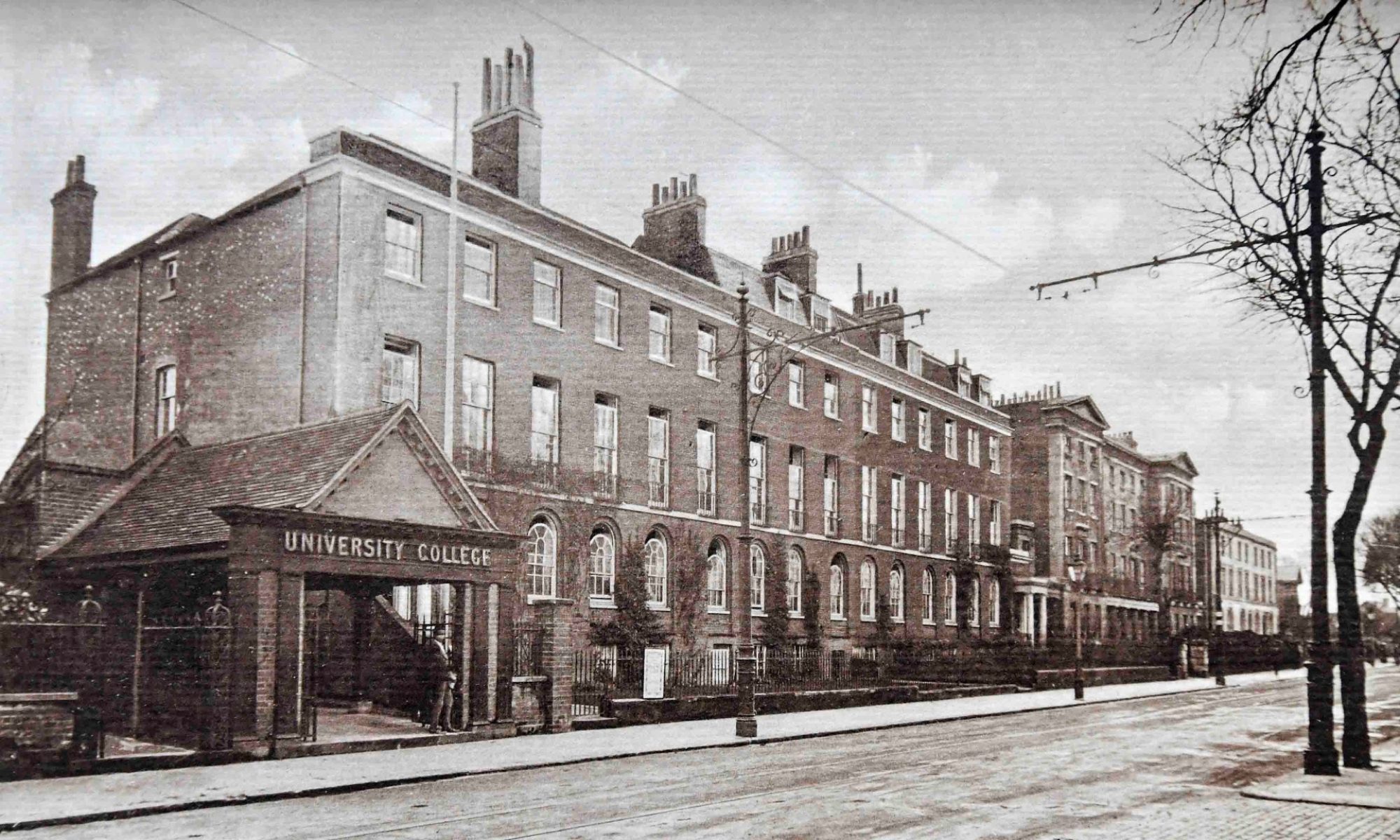On 22 September 2021, an All-Staff Briefing, Path to our Centenary, was delivered by Vice-Chancellor Robert Van de Noort and Deputy Vice-Chancellor Parveen Yaqoob.
A major theme was Community as a vehicle for progress. In the words of Professor Yaqoob:
‘When we talk about community we are talking about a diverse and inclusive community of people working towards a common purpose’
Similar aspirations have a long history at Reading. In the 1890s and early 1900s when the future of the original College was precarious, few would have bet on it becoming a university. A priority was to create a sense of unity. This is documented by William Macbride Childs, Reading’s first Vice-Chancellor in ‘Making a University’ and Edith Morley in ‘Reminiscences of a Working Life’.
Professor Yaqoob’s words could easily be attributed to either of these key figures in the history of the University.
Of the mid-1890s Childs declares (p.24):
‘Our object was to evoke a spirit of corporate self-respect and unity in an institution which as yet had none….Had there been no missionary effort in 1894 and later, there could have been no University College with a character upon which could be founded a claim for university independence.’
Morley emphasises the value of ‘communal life’, ‘corporate spirit’ and ‘a sense of common aims and interest’. She asserts (pp.108-9):
‘The building of a community is….historically, the recognised first step in the evolution of an academic institution. In this view Childs never wavered…’
Typically, Morley is generous in her praise of Childs’s attempts to overcome ‘the lack of cohesion’ that stood in the way of progress; she is silent about her own contribution.
Early initiatives to develop a corporate spirit include the College Journal, the athletics club, the debating society and ‘staff sociables’, the latter being a failure – ‘a misfire’ as Childs puts it (p.23).
In 1895 an earlier students’ association was resurrected as a ‘literary and historical society’. This too was a miserable failure. As described by Childs (pp.30-31):
‘Long papers, congested with information from the usual sources, were read to taciturn people who sat in drooping boredom, staring into vacancy.’
Childs replaced it with the Gild (sic) of the Red Rose, essentially a literature and theatre society with historical roots. In the College Calendars, the object of the Gild is stated as:
‘to labour always for the common weal, the increase of humane learning, the honour of this College, and the fair fame of our Gild.’
The Gild appears to have been a great success at the time. According to Childs:
‘Every meeting was a realization of unity’ (p.32).
Edith Morley was an enthusiastic supporter, and had fond memories of its rituals and the festivals known as Janticula. Successive College Calendars show her to have been an active member as one of the Curia (committee members), becoming Clerk in 1904 and then Reeve in 1908.

So why were these steps so necessary? After all, the College was tiny by today’s standards, with no more students than a modern state secondary school. What was the problem? In addition to issues over appropriate accommodation and staffing at least part of the answer lies in the very diversity of the student population, their courses and those hired to teach them.
College leaders were faced with the dilemma of how to create a homogeneous whole when: a) their clientele ranged in age from young pupil teachers and fifteen-year-old ‘actual and intending wage-earners’ to elderly extension students; b) there was a strong reliance on evening students as well as day students; c) the curricula varied from craft skills and scientific and technical subjects to ‘the humane arts’, training elementary school teachers, dairy students and light agriculture for women (referred to by Childs as ‘a feminist experiment’, p.18).
In Morley’s view, a significant contribution to communal life was the founding of a small Senior Common Room in Valpy Street in 1897, followed by the SCR at London Road after the move in 1905. At a time when she was one of only seven female academics, Morley vehemently opposed the suggestion of a separate common room for women:
‘…we determined in no circumstances to avail ourselves of a separate women’s common room and thus to risk gradual exclusion from intercourse with our male colleagues.’ (p.103, footnote).
The emphasis on community explains Childs’s controversial decision to give building the Great Hall priority over such matters as staff accommodation. It was to be a meeting place, ‘a rallying centre of life’ (p.56).
It will be interesting to see how the University’s goals will be met in time for its Centenary in 2026. What measures will be taken to achieve the ‘diverse and inclusive community‘ referred to above?
I doubt whether, in this day and age, they would include the revival of arcane rules, rituals and pledges of anything like the Gild of the Red Rose, with its Curia, Reeve and extravagant Jantacula. The Gild did survive until the late 1980s, but by this time it had ceased have the unifying effect claimed for its earliest years. Viv Edwards, Professor Emerita at the University of Reading, was a student at Reading in 1968-76. She remembers that:
‘Jantac, as it was known, was certainly going in our day but we were never involved.’
Sources
Childs, W. M. (1933). Making a university: an account of the university movement at Reading. London: J. M. Dent & Sons Ltd.
Morley, E. (2016). Before and after: reminiscences of a working life (original text of 1944 edited by Barbara Morris). Reading: Two Rivers Press.
University College Reading. Calendars, 1904-5 to 1908-9.
Thanks
To Professor Parveen Yaqoob for permission to quote from her presentation and for her comment on a previous draft.
To Professor Viv Edwards for permission to quote her and for her support.
